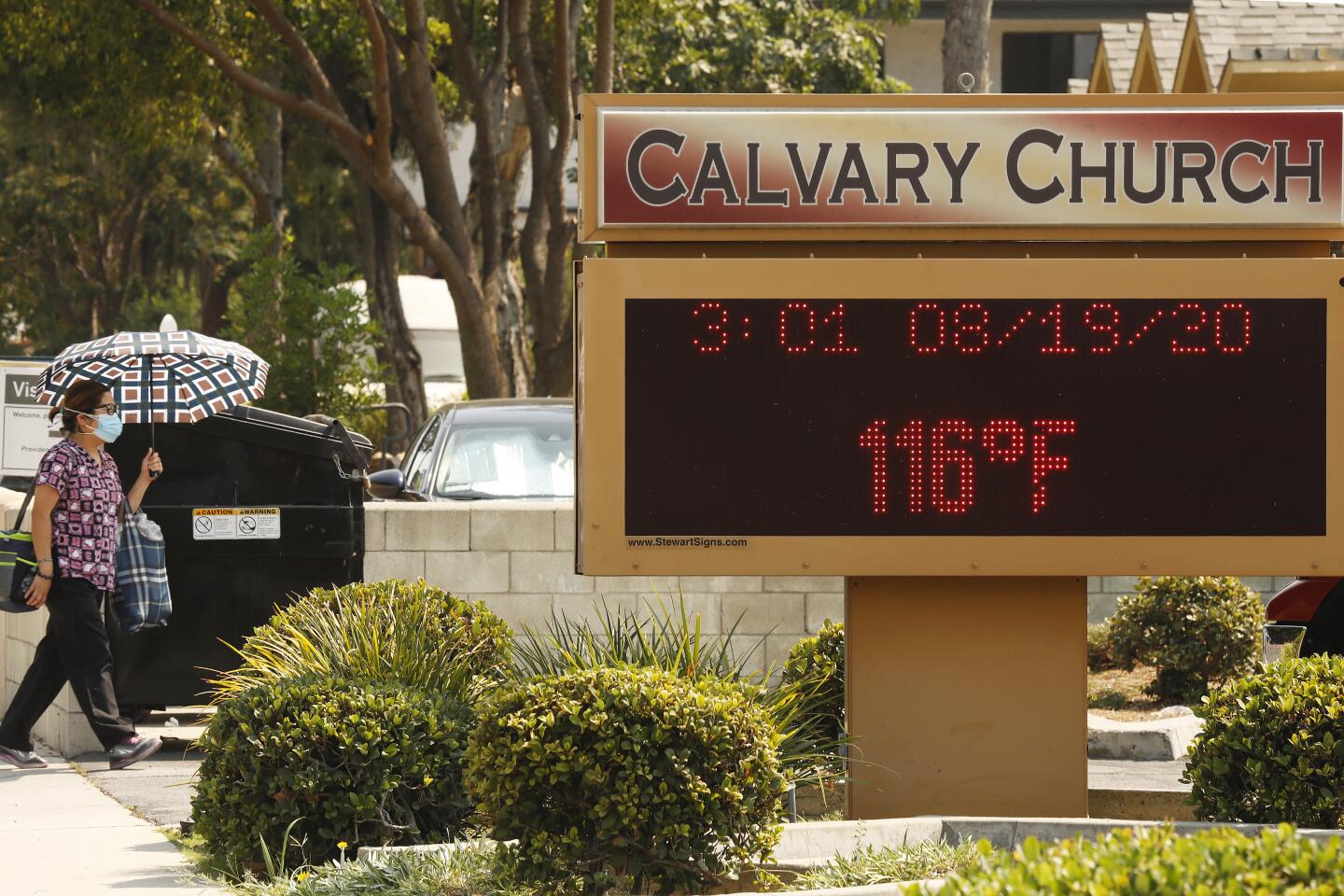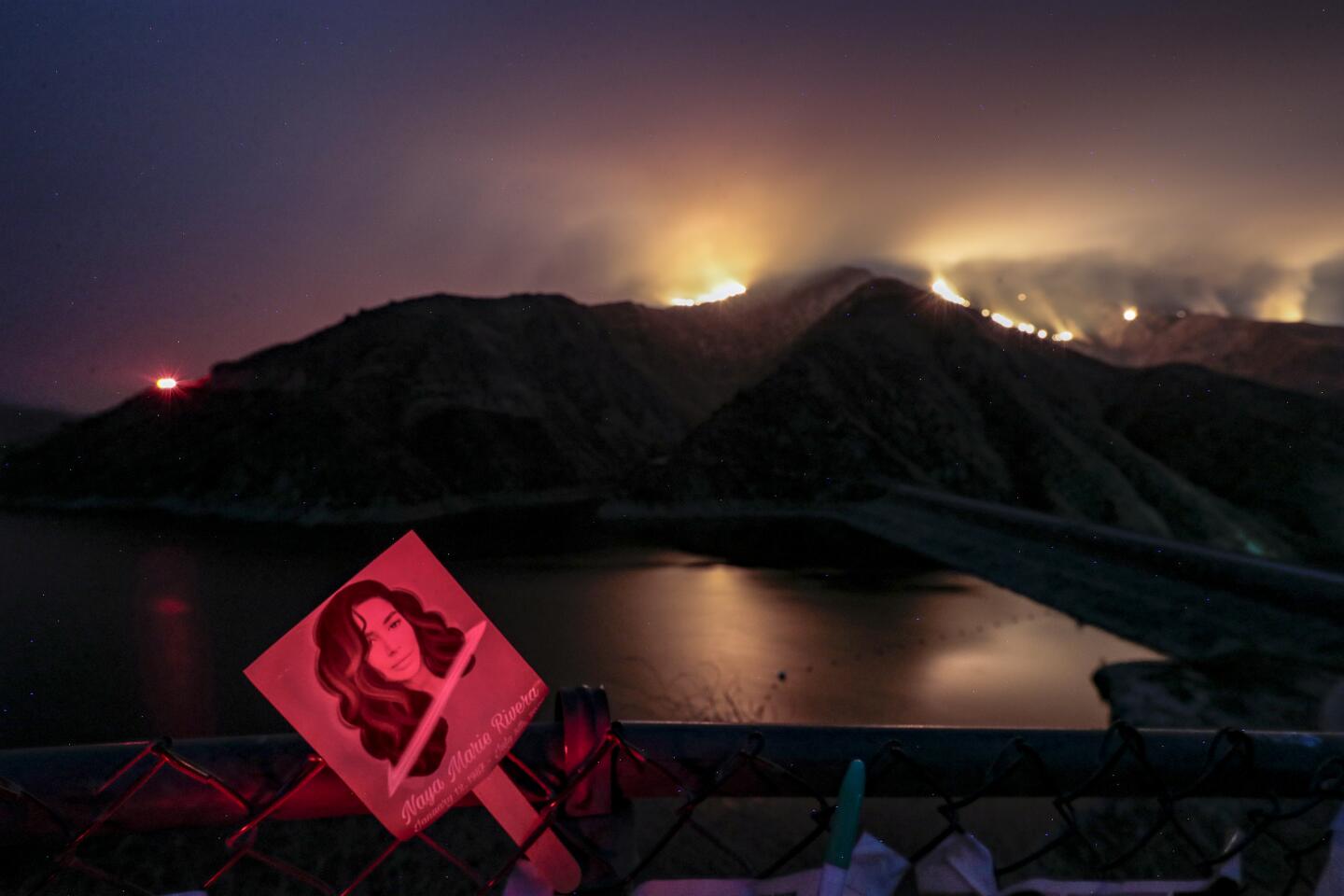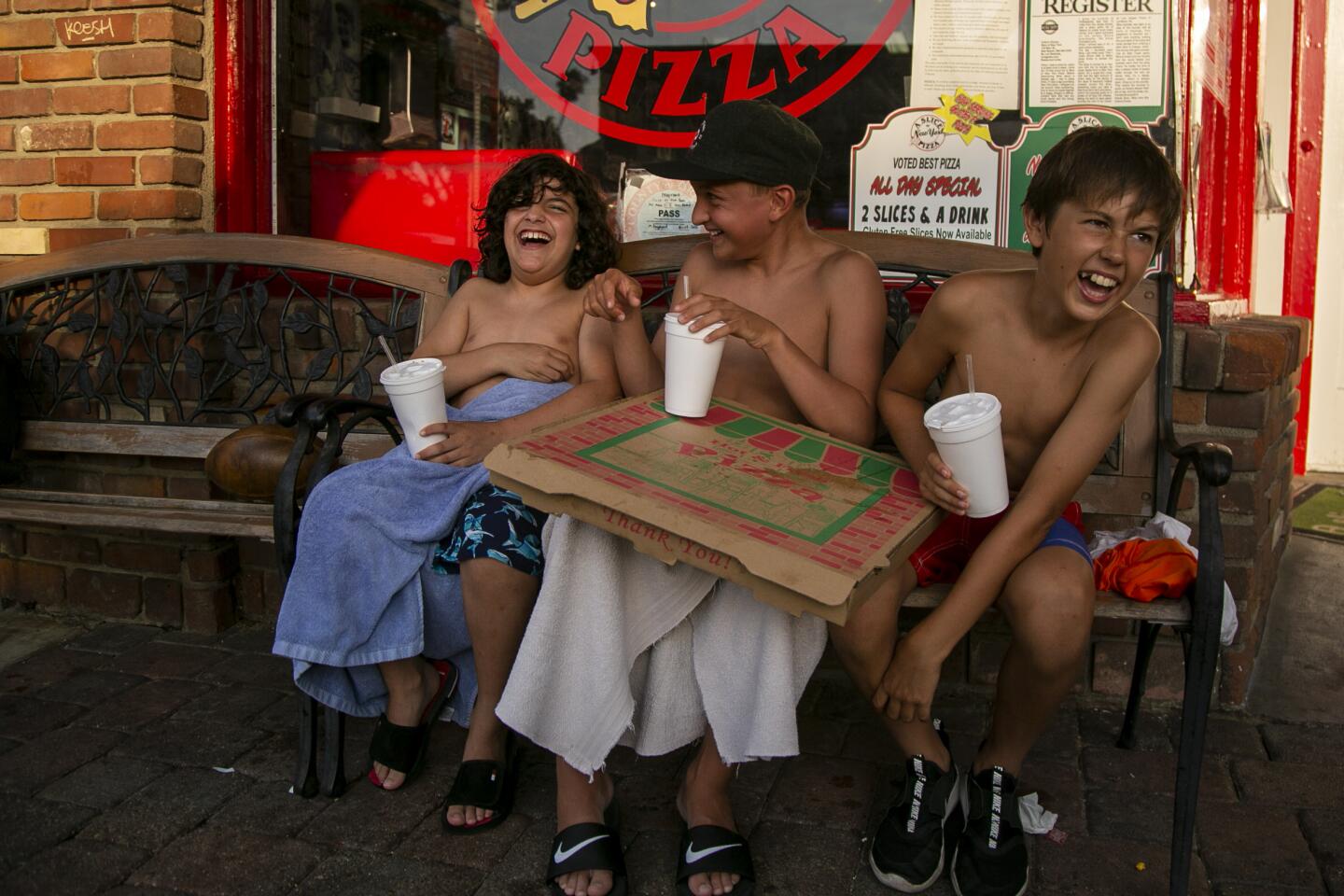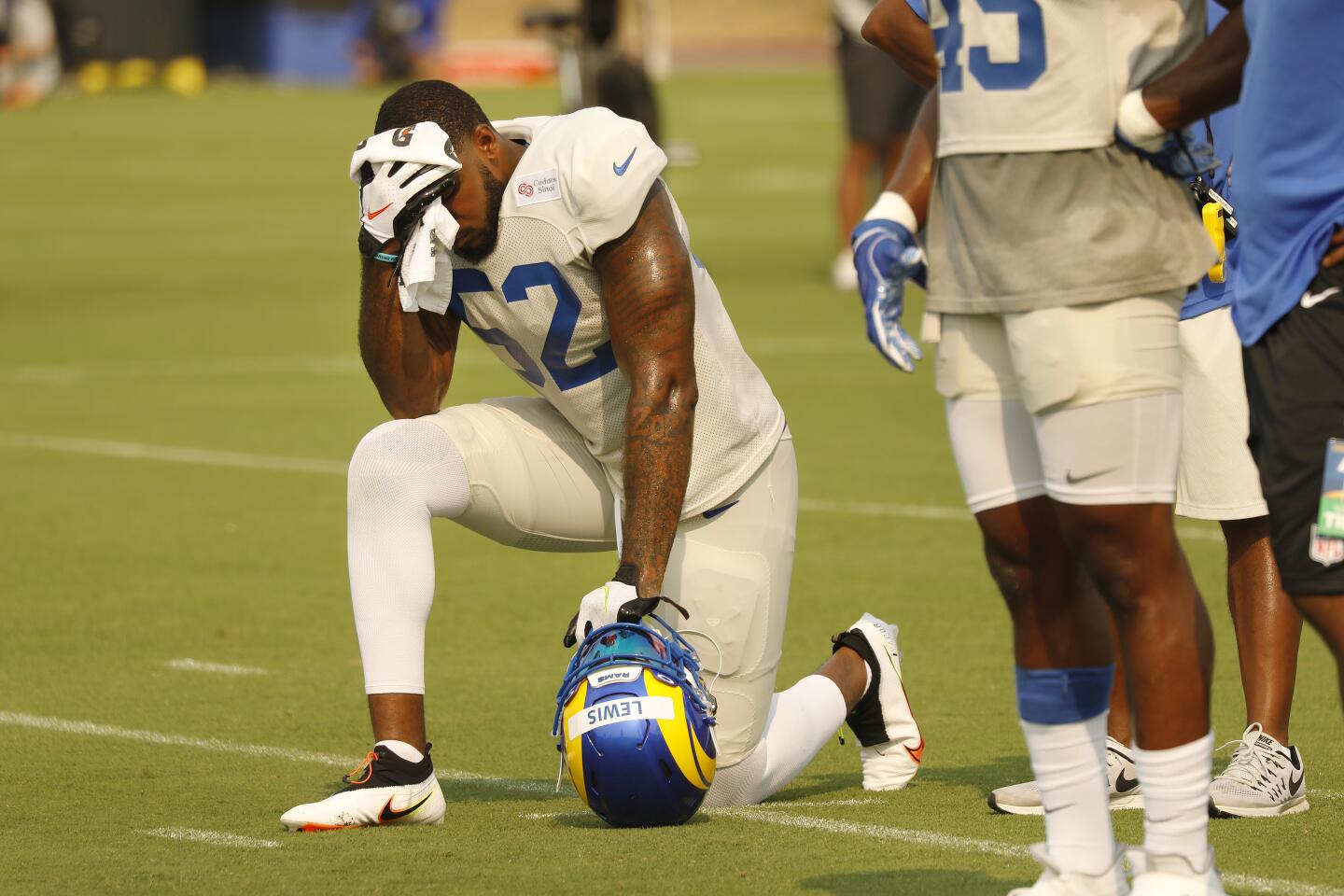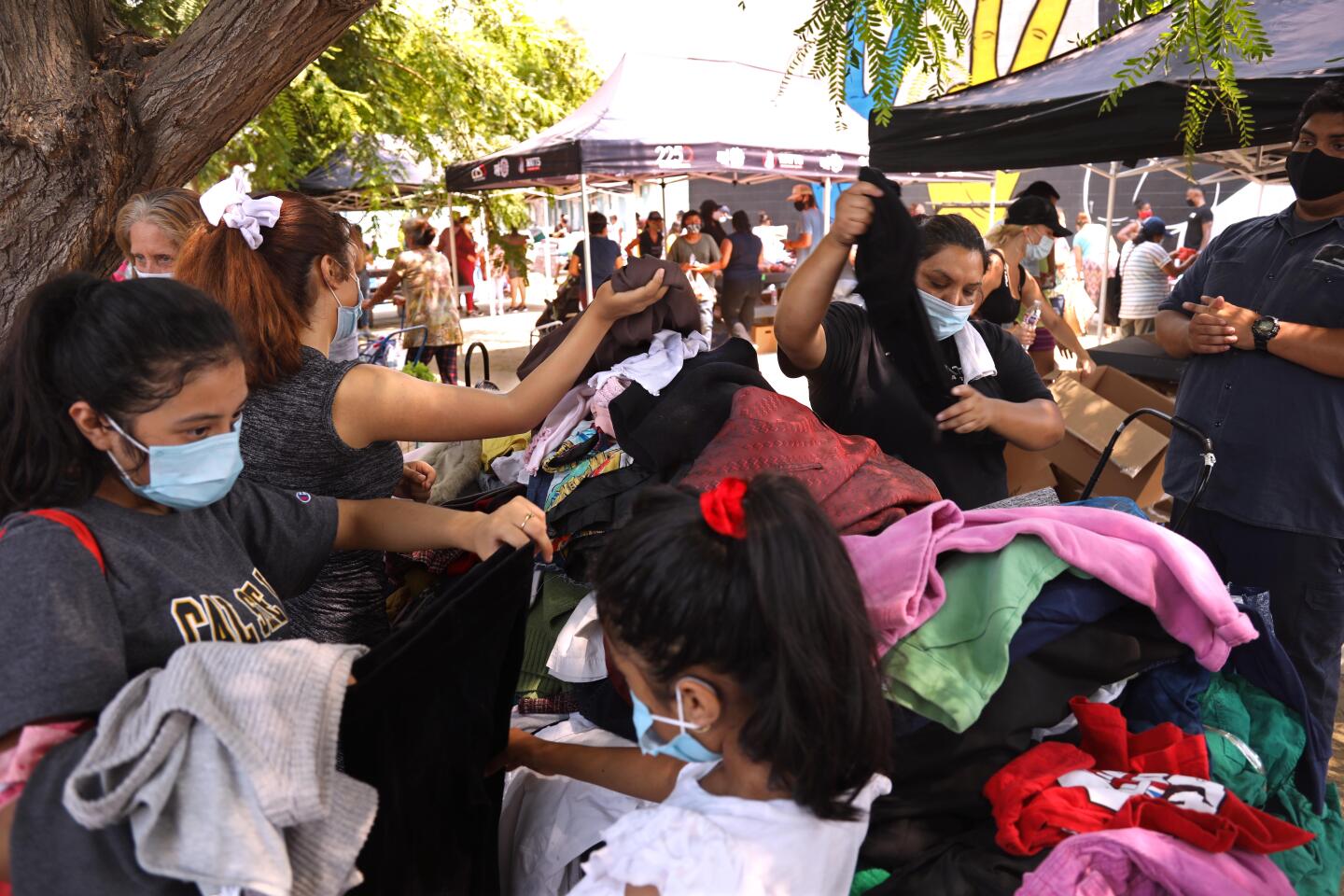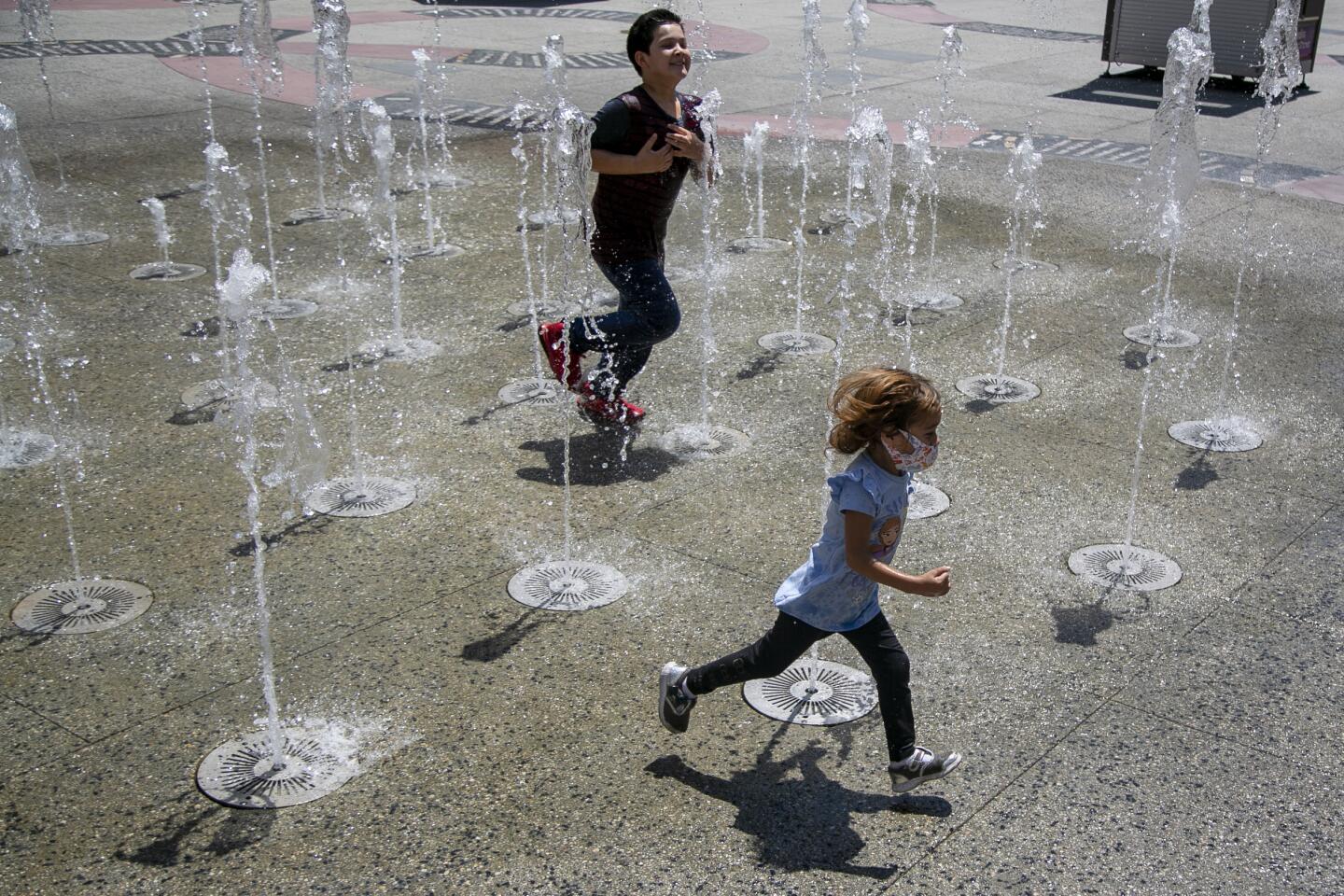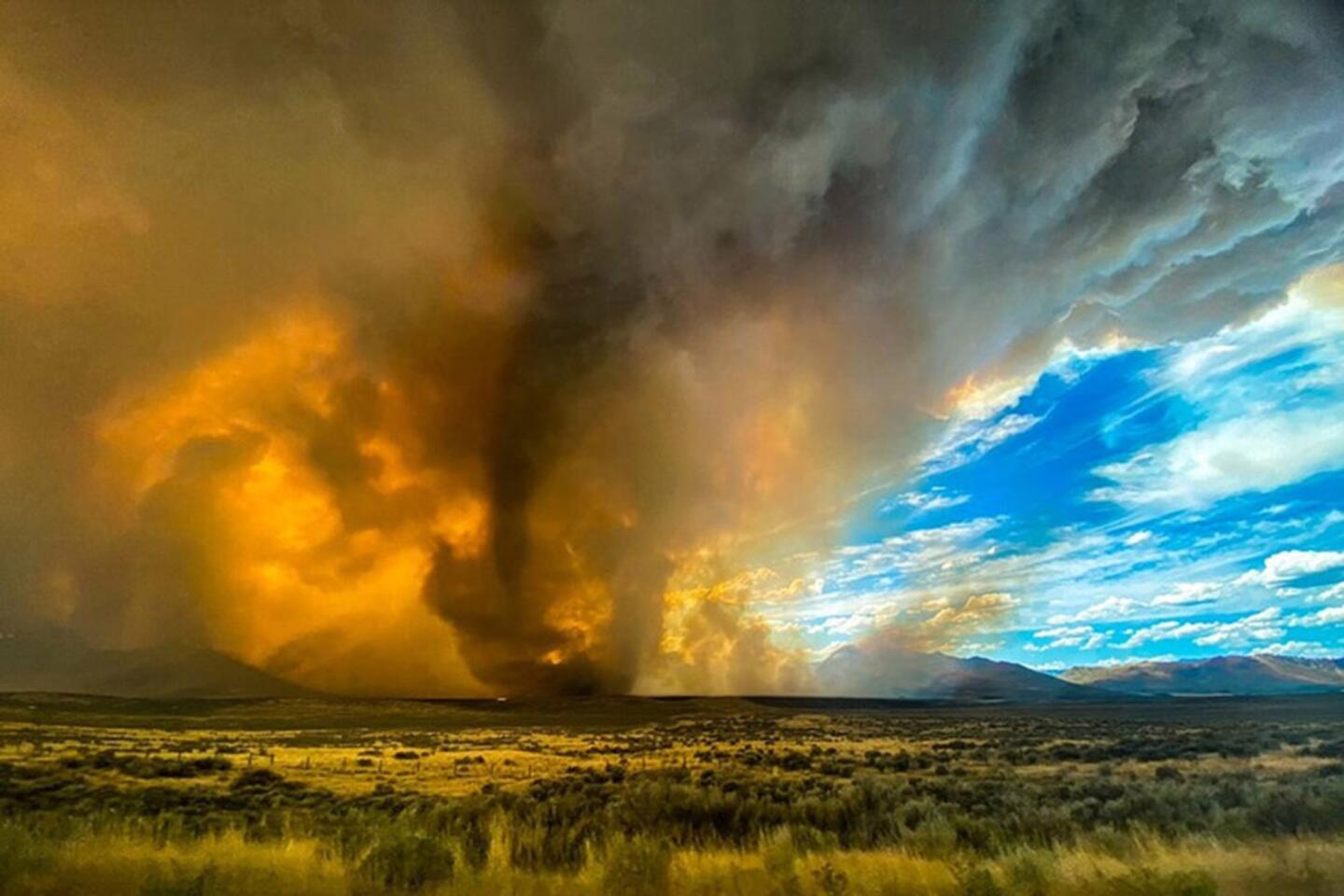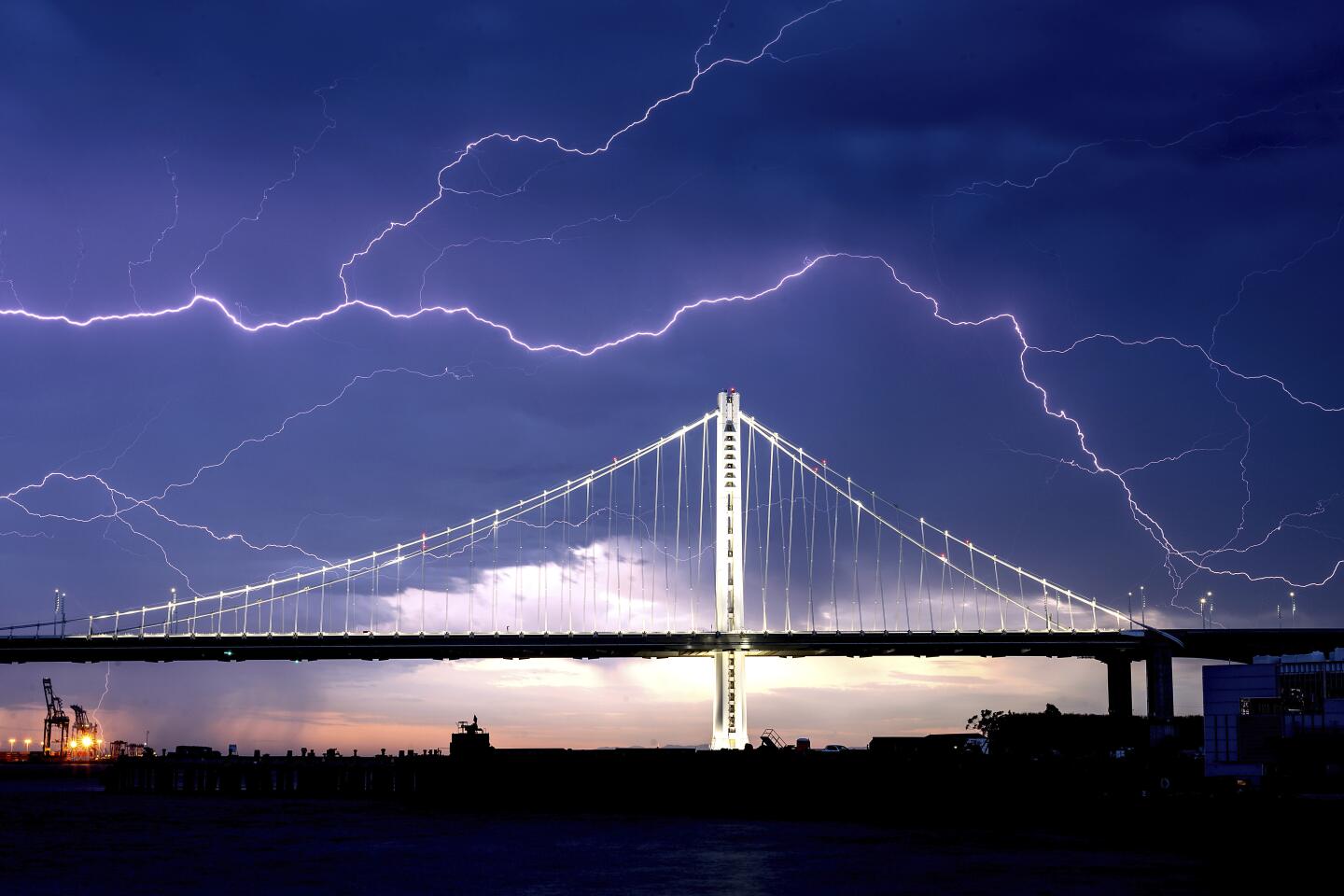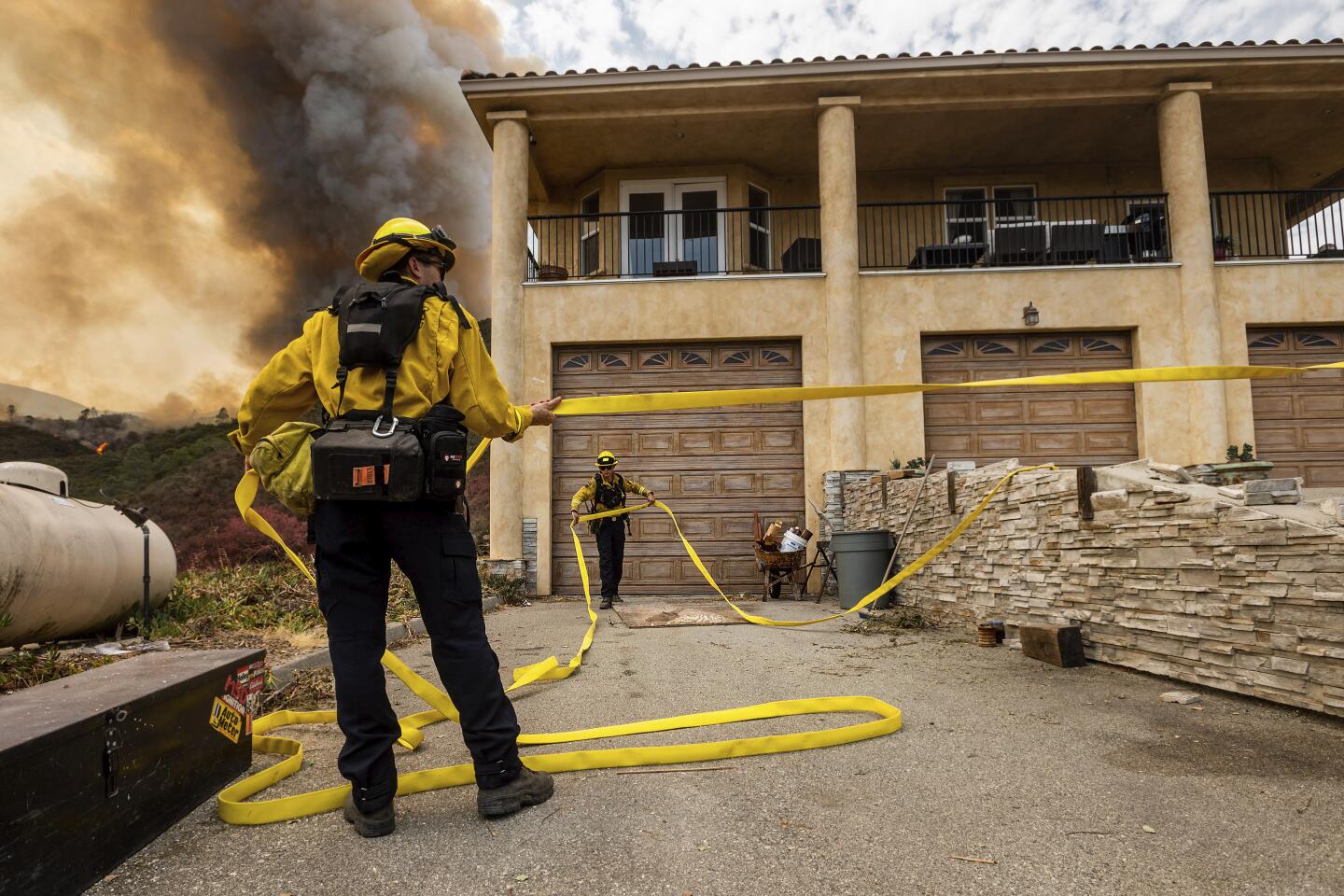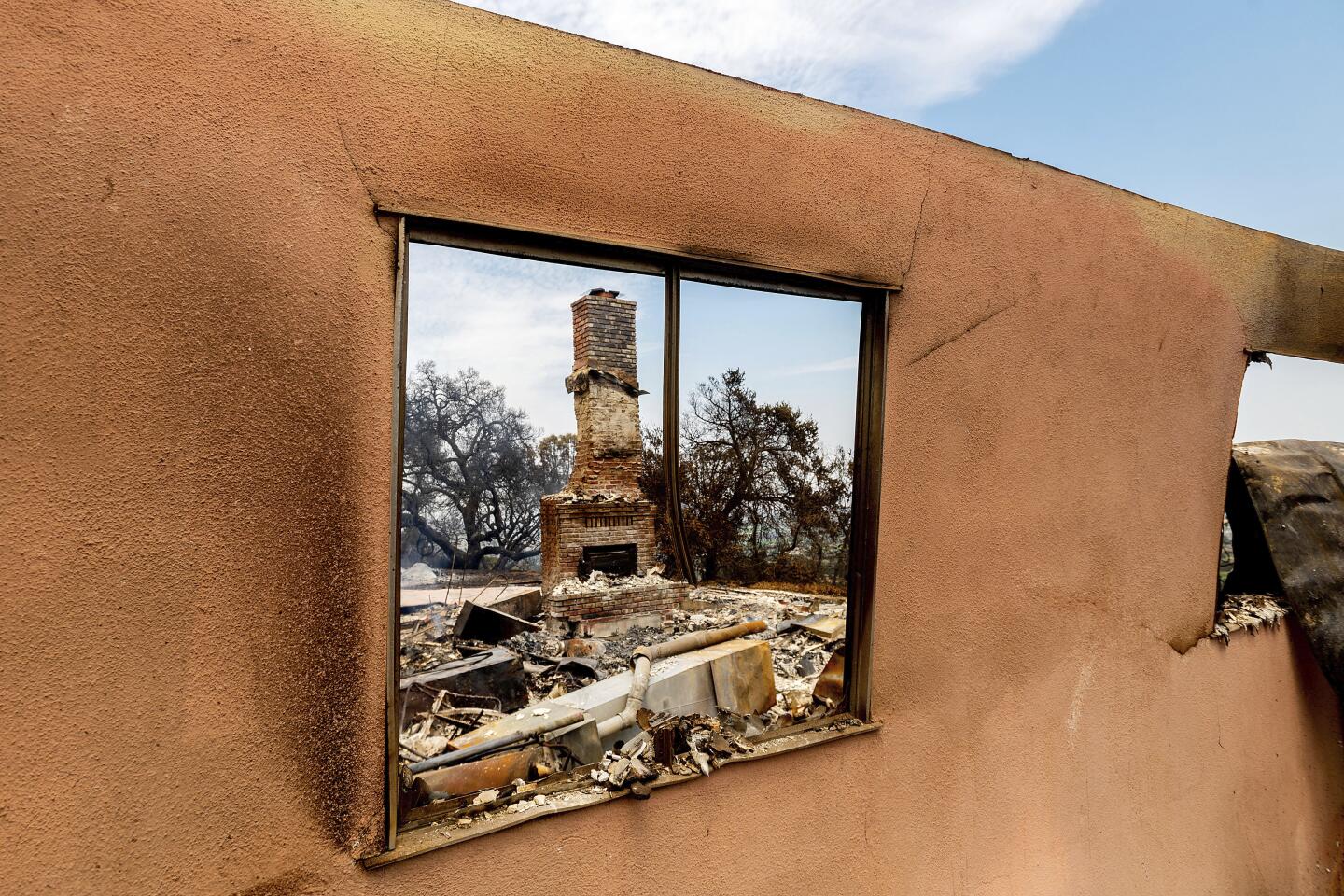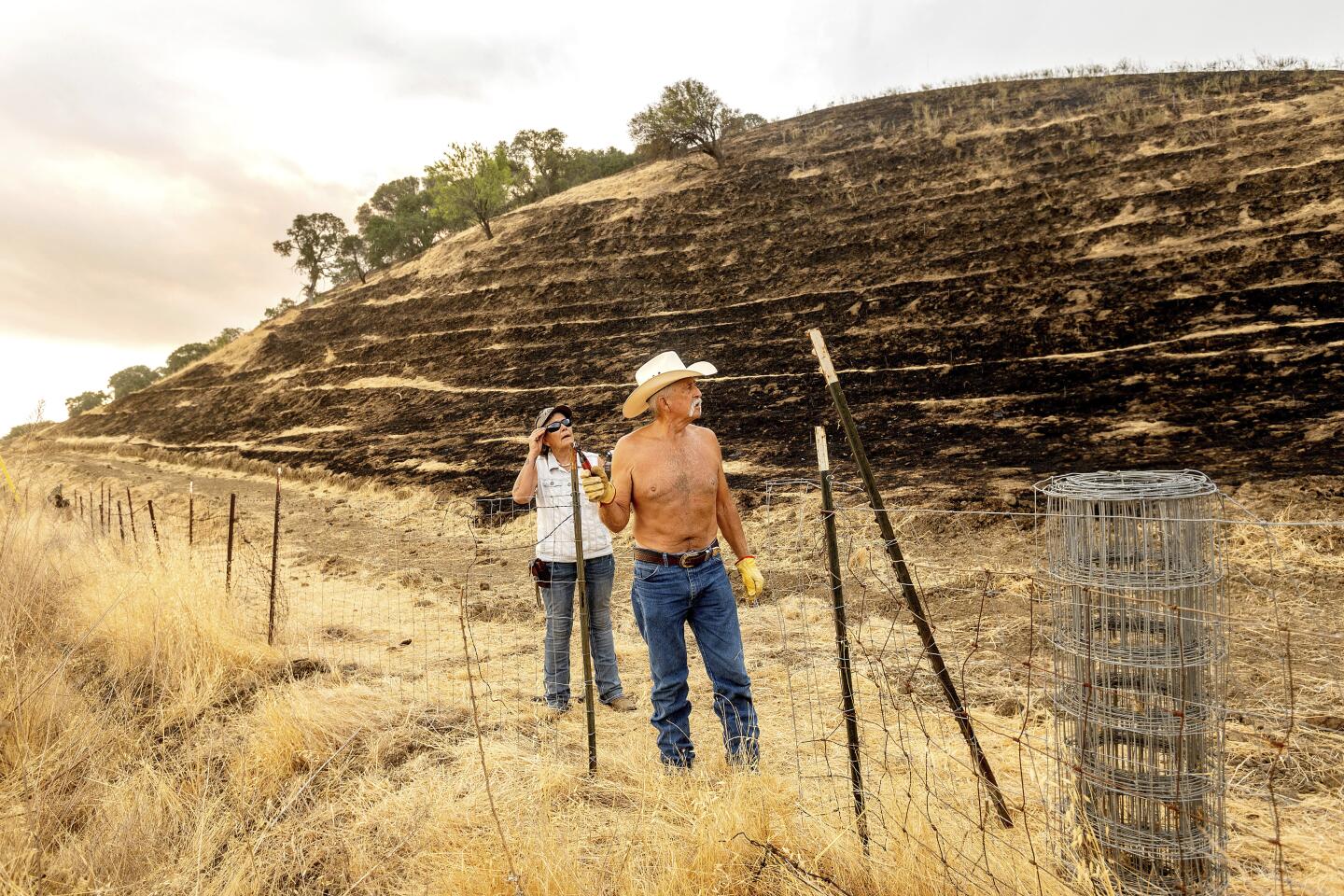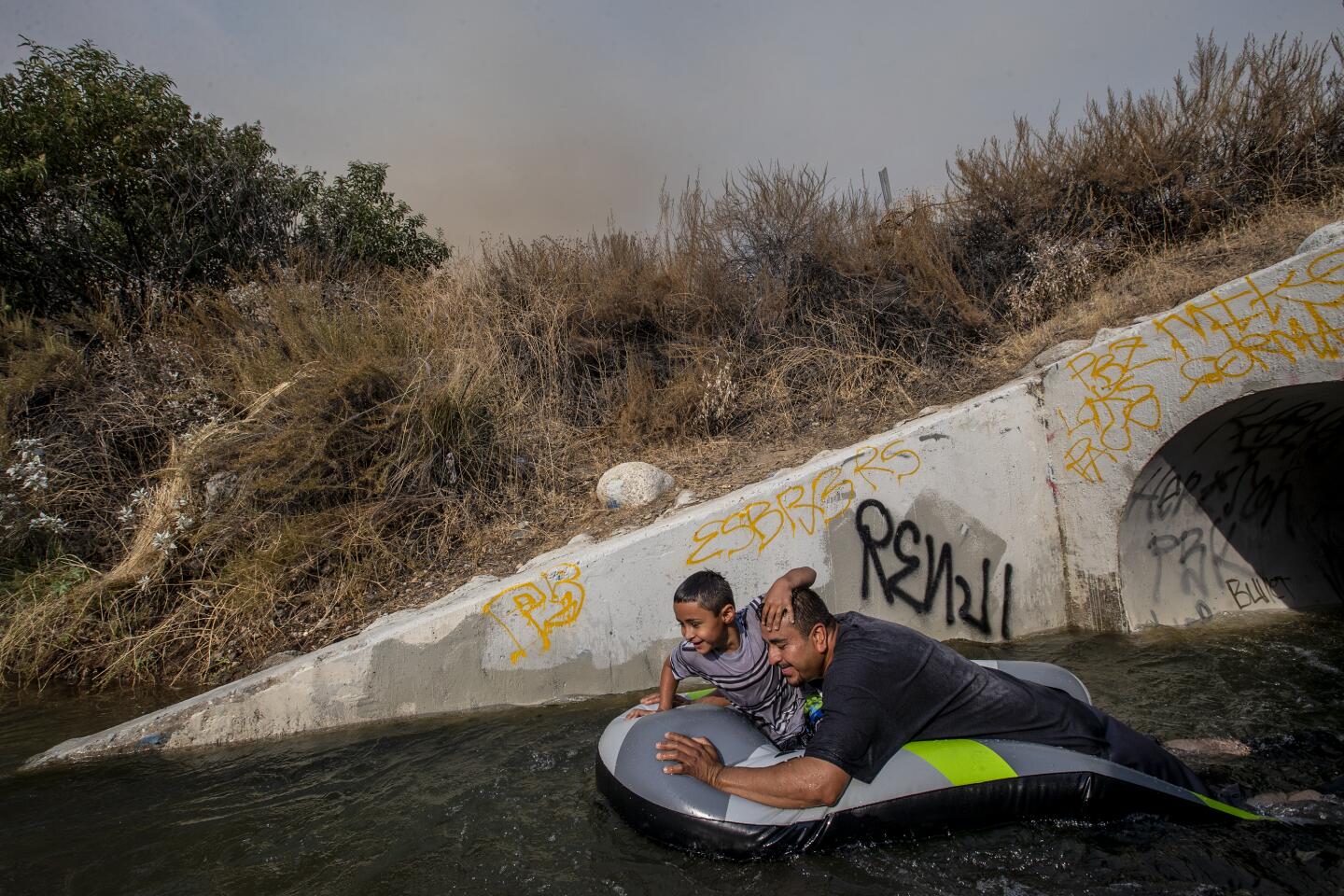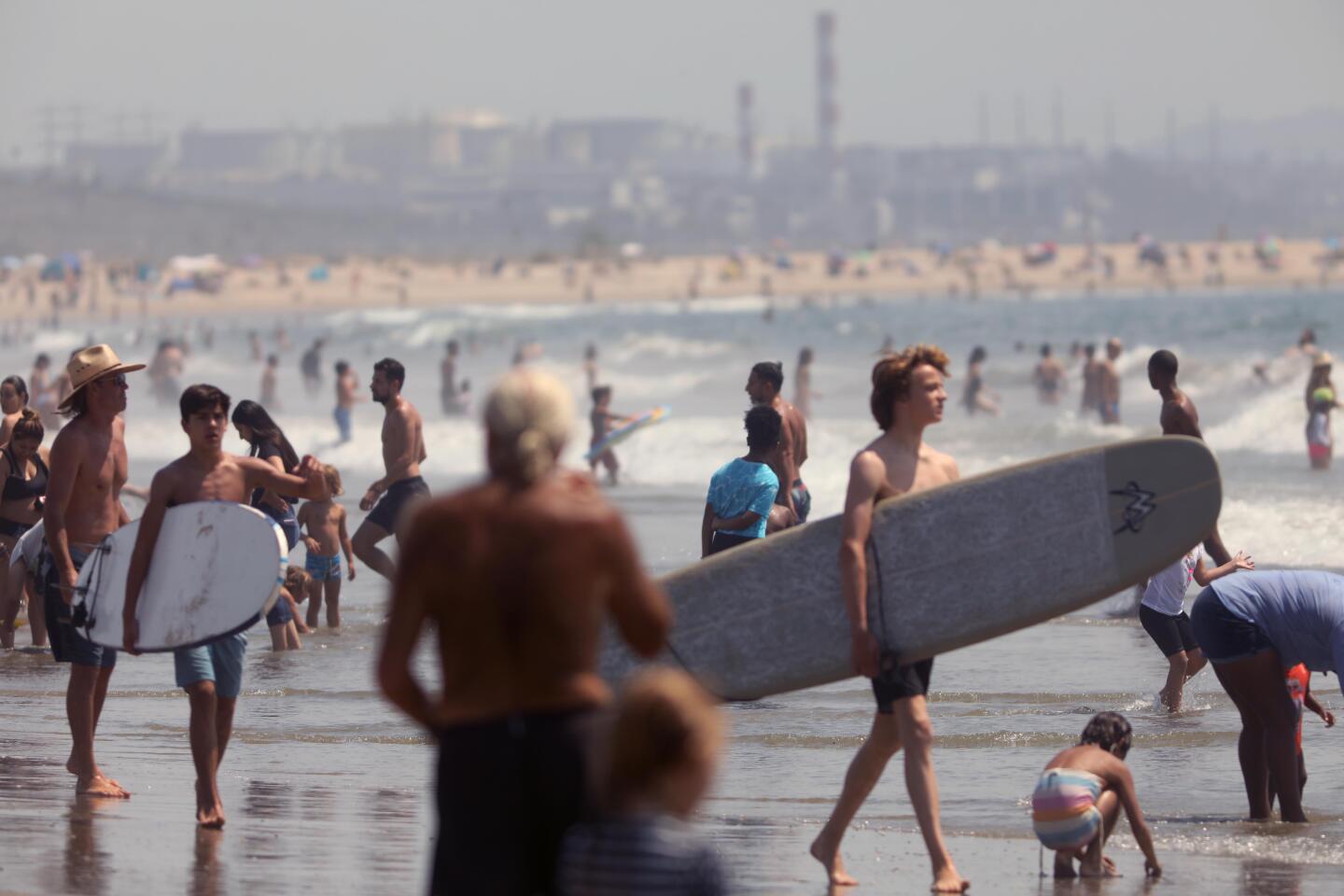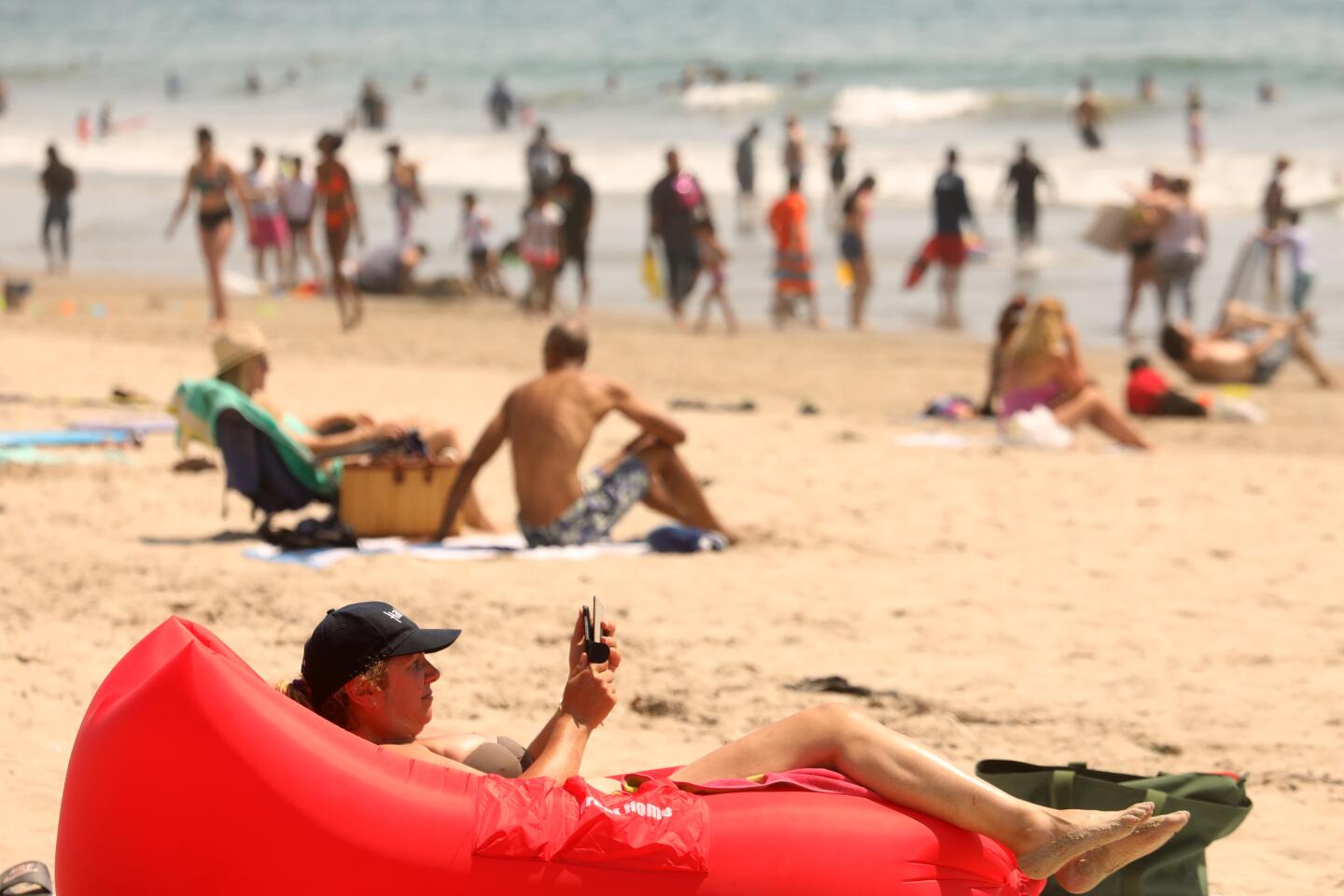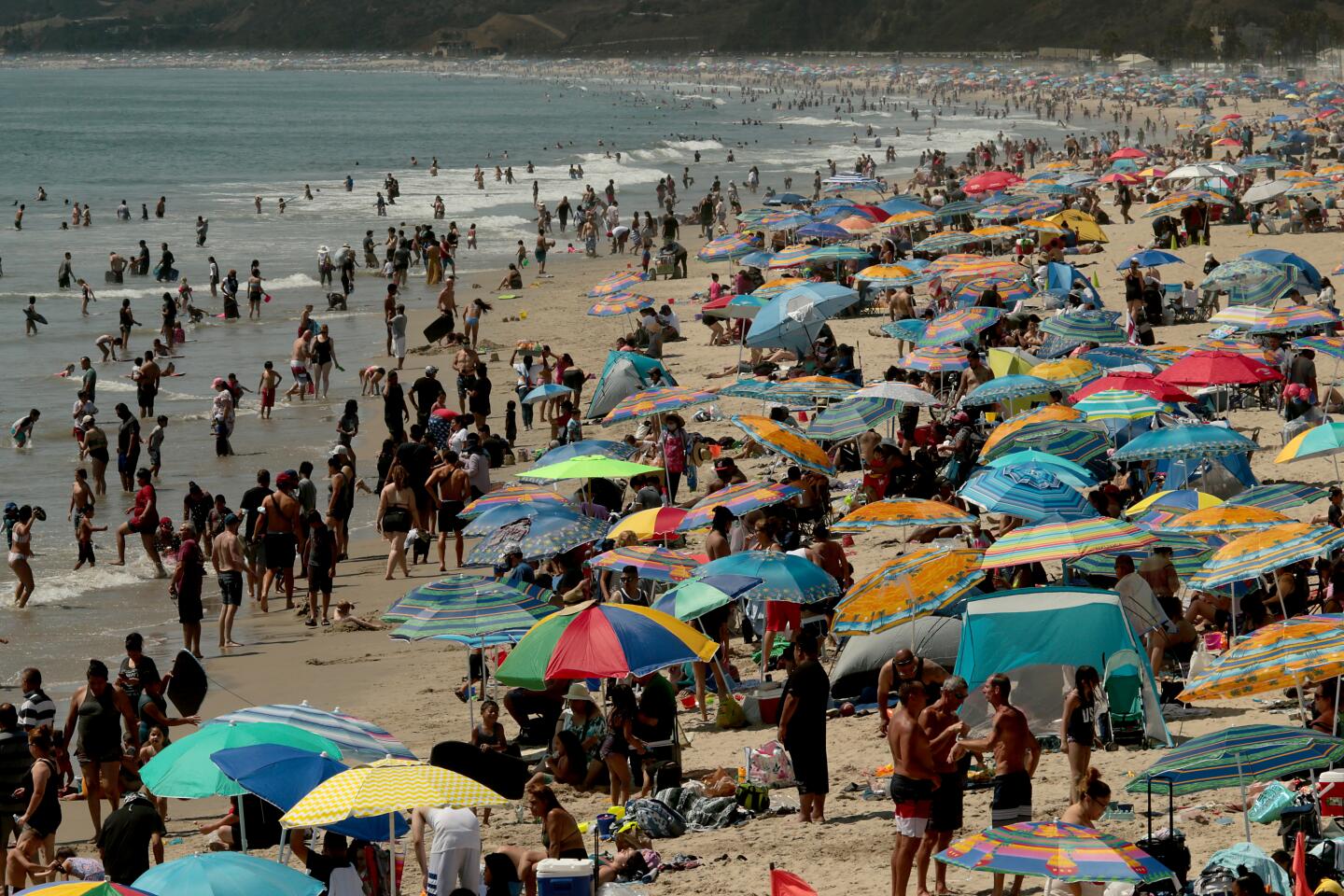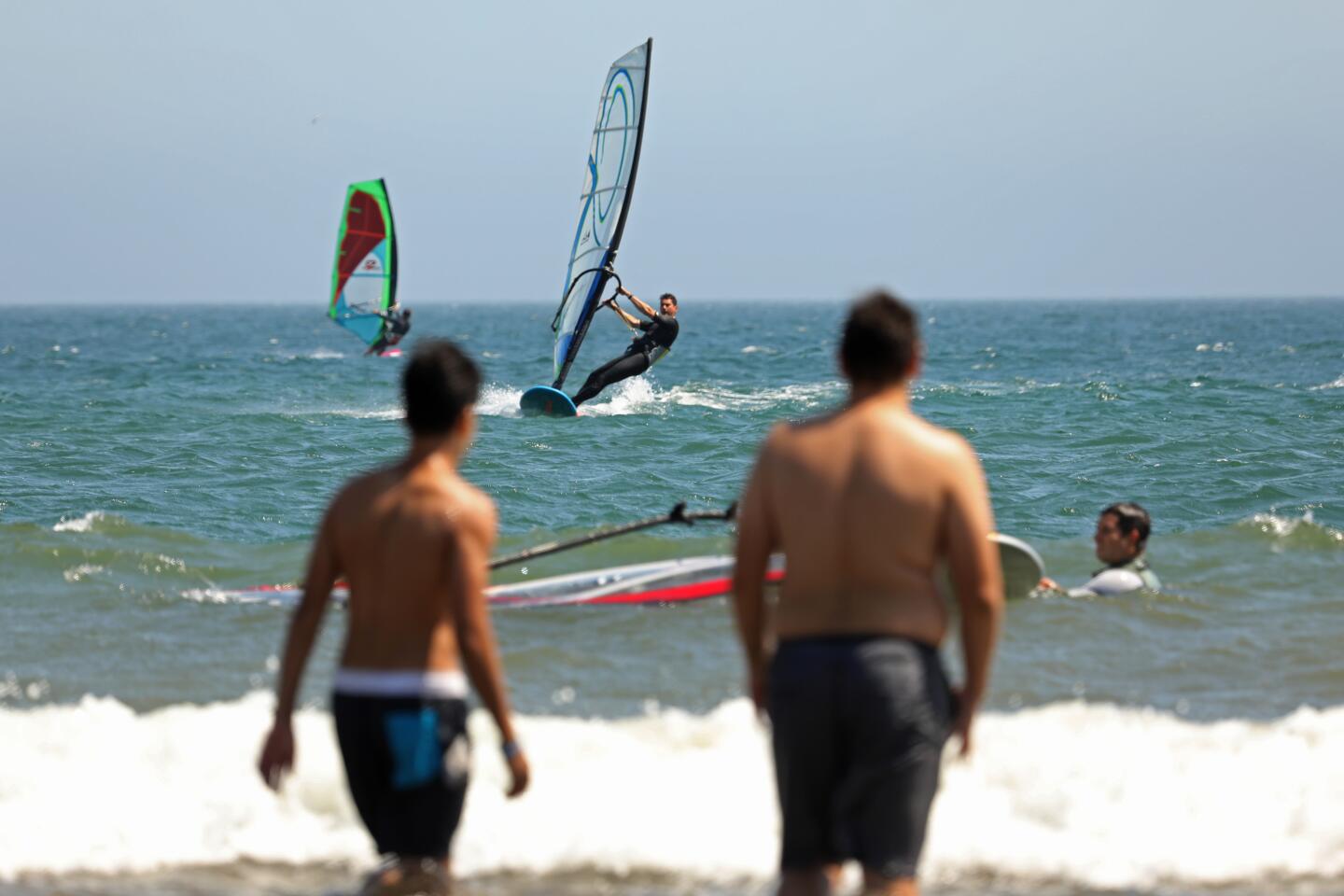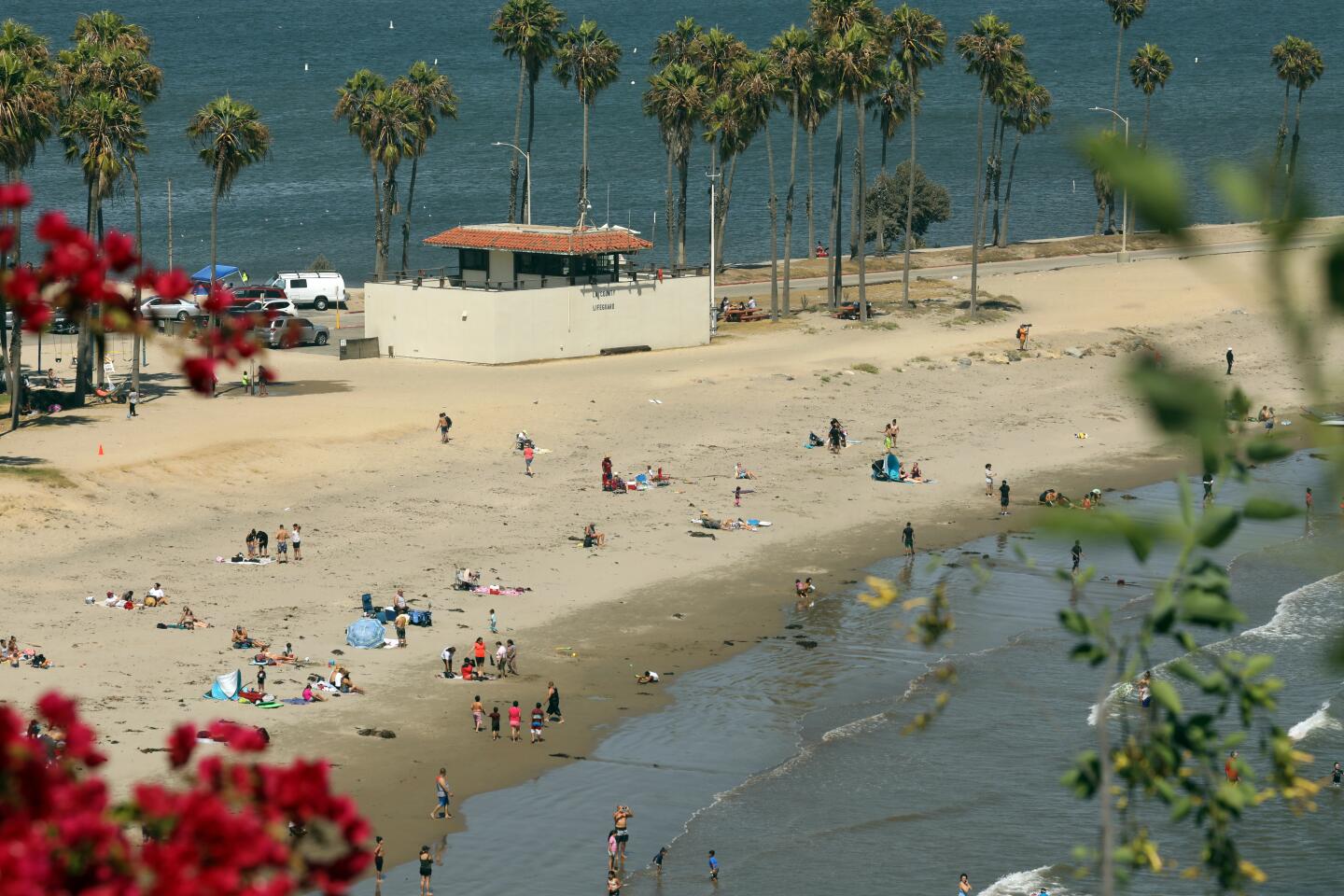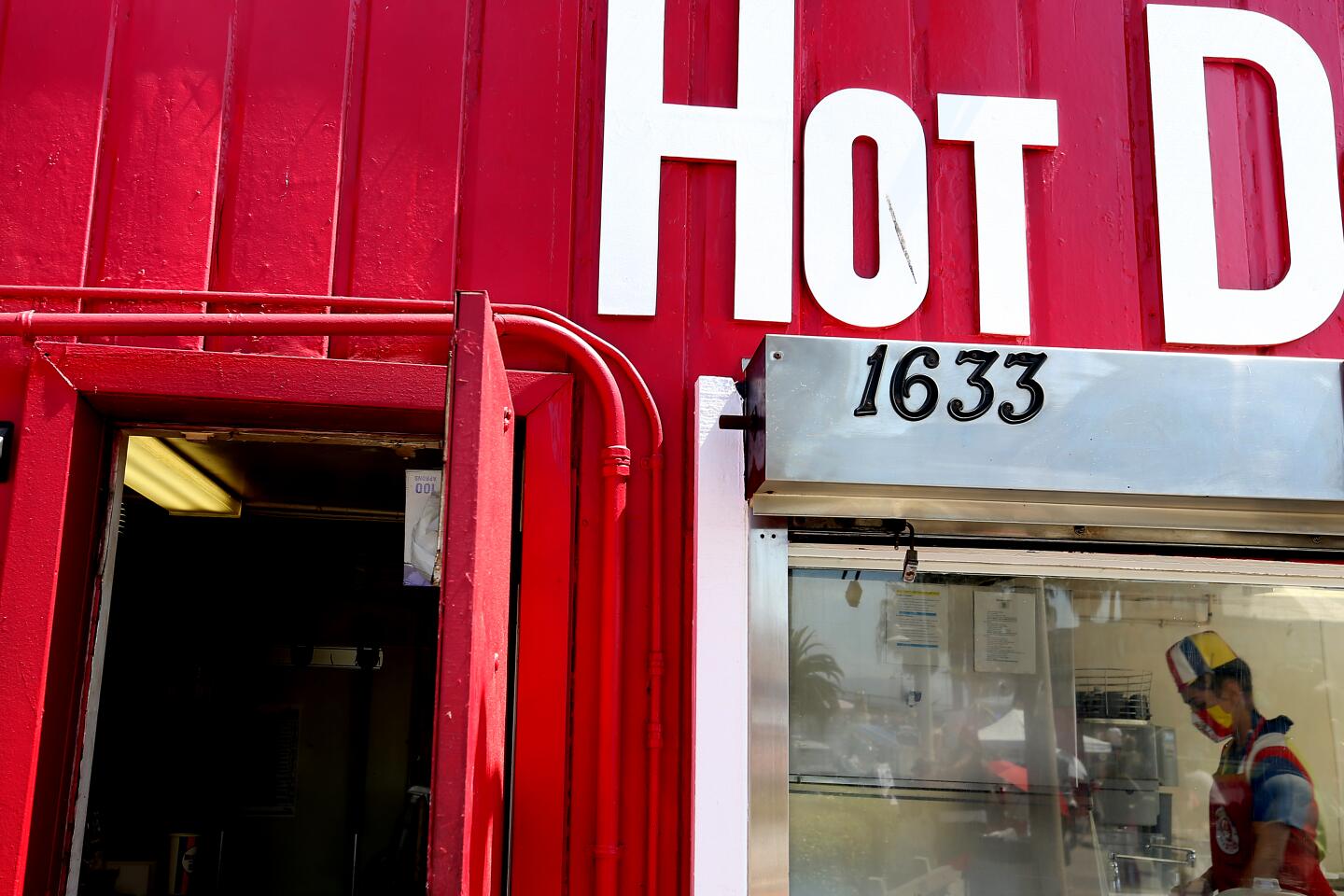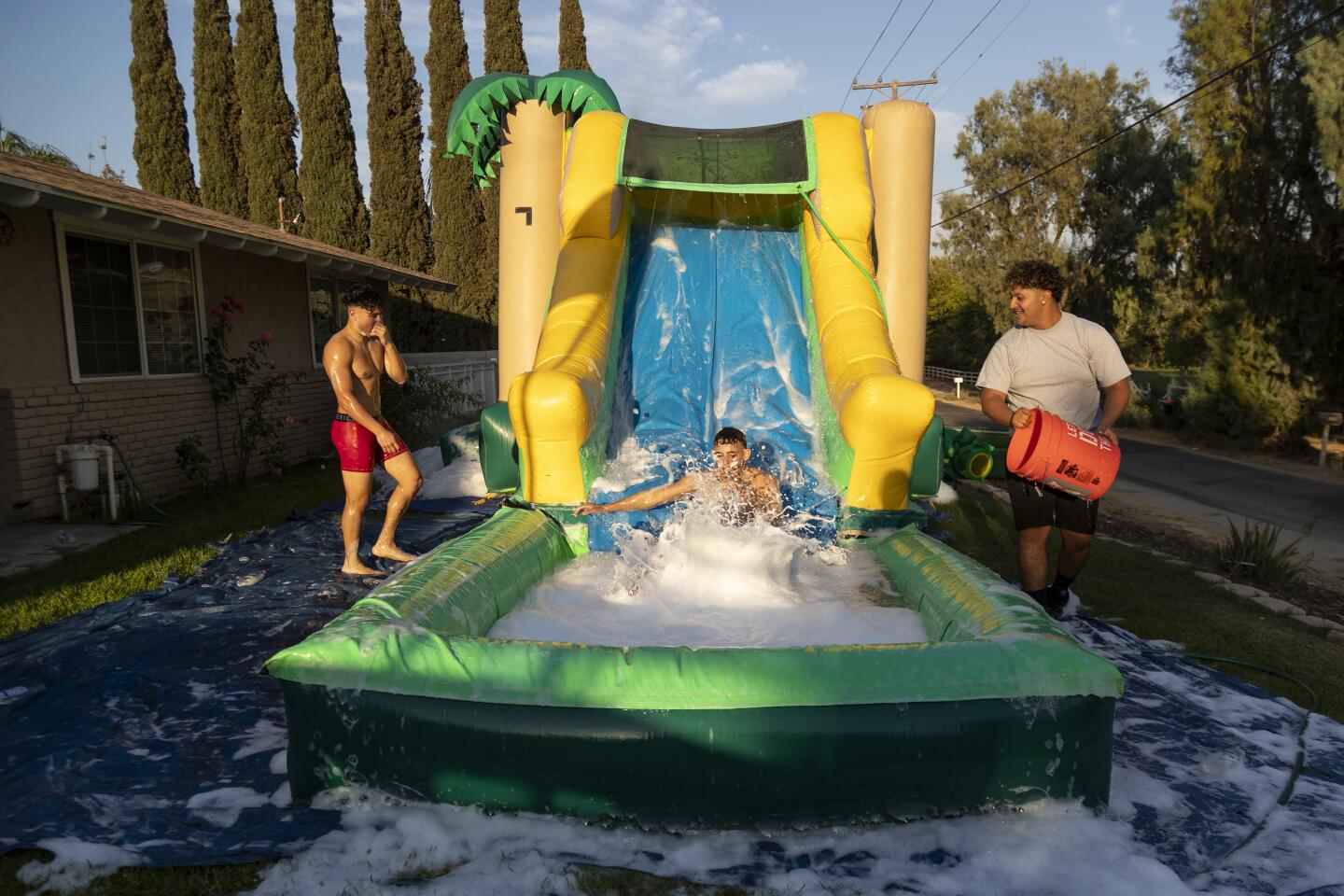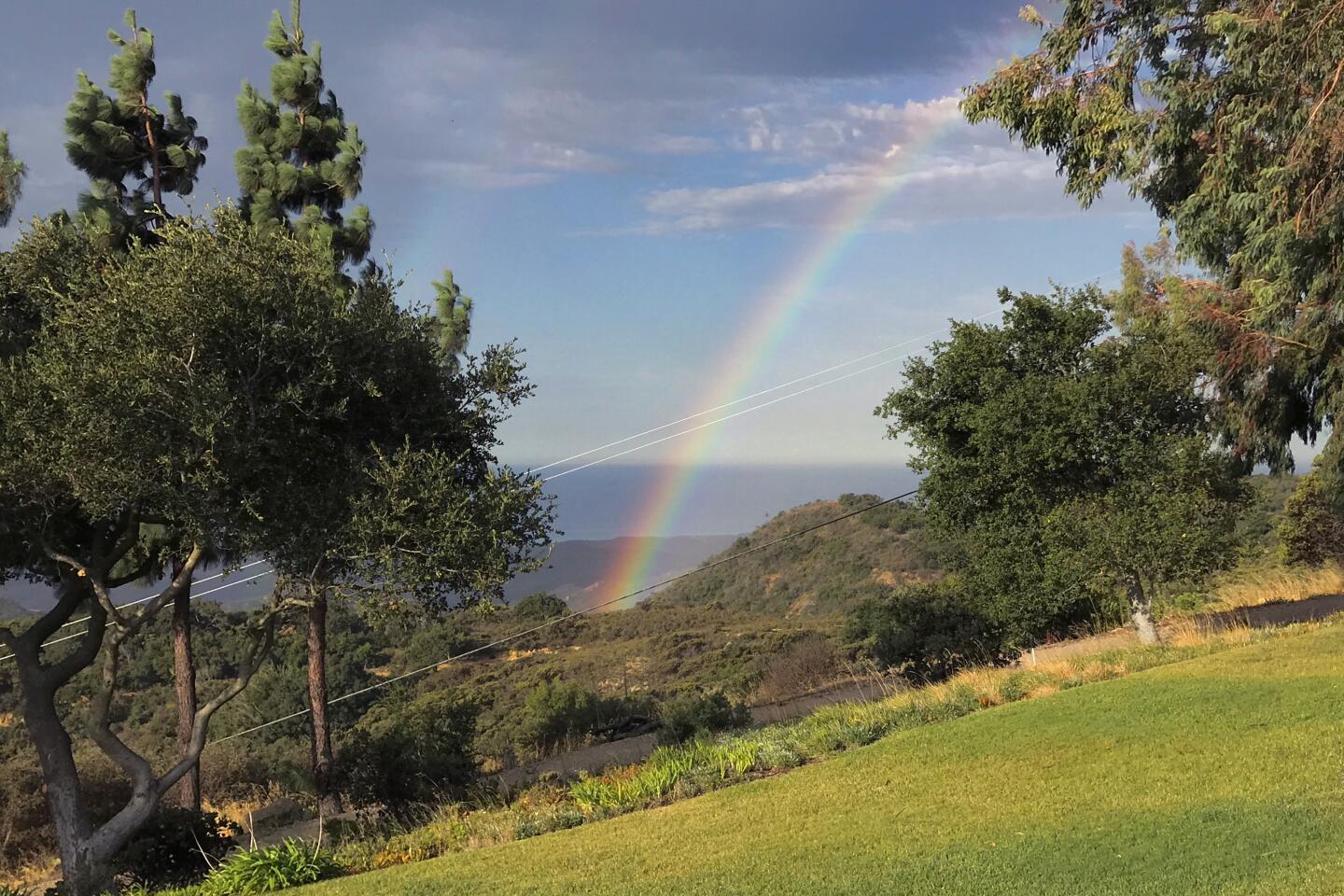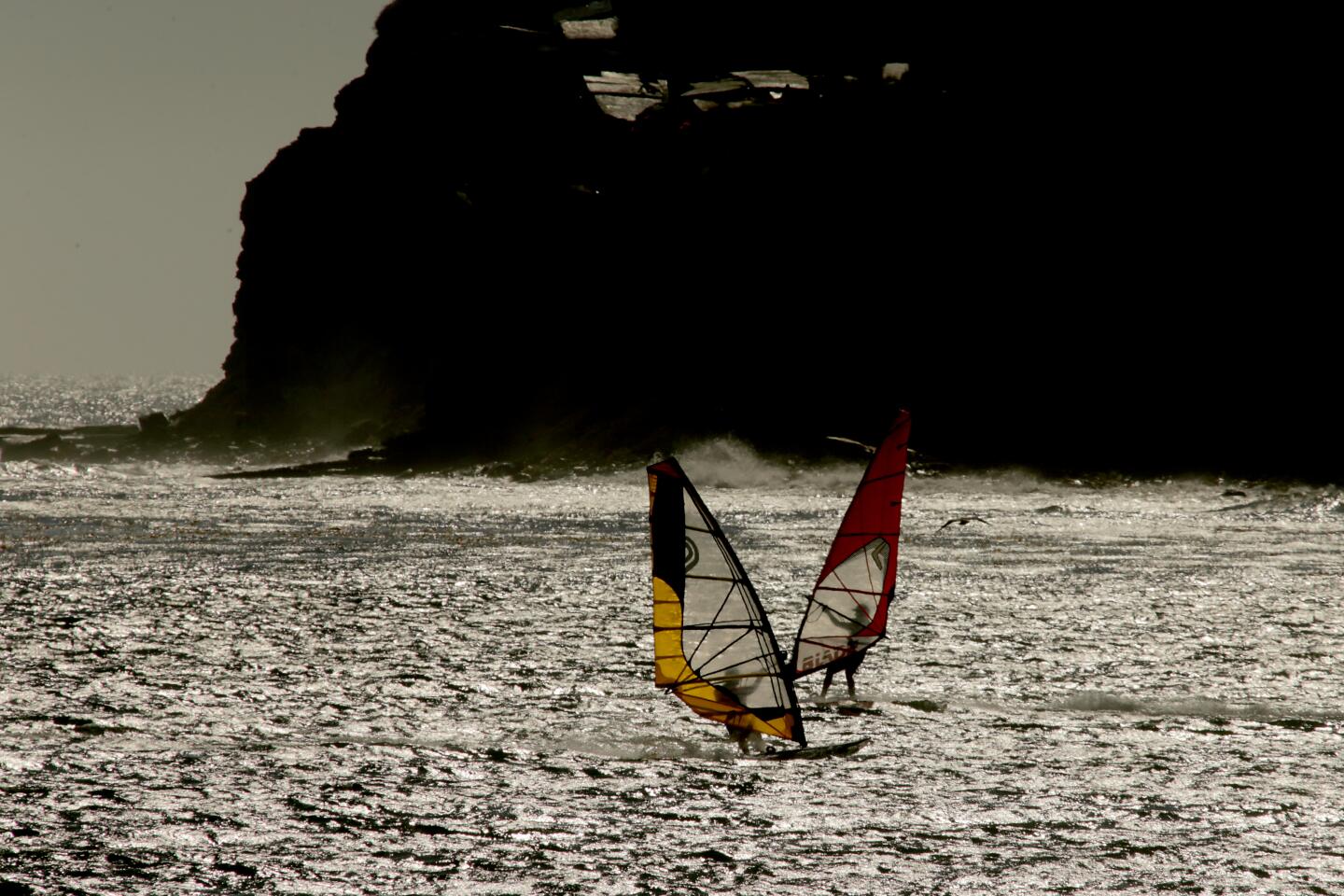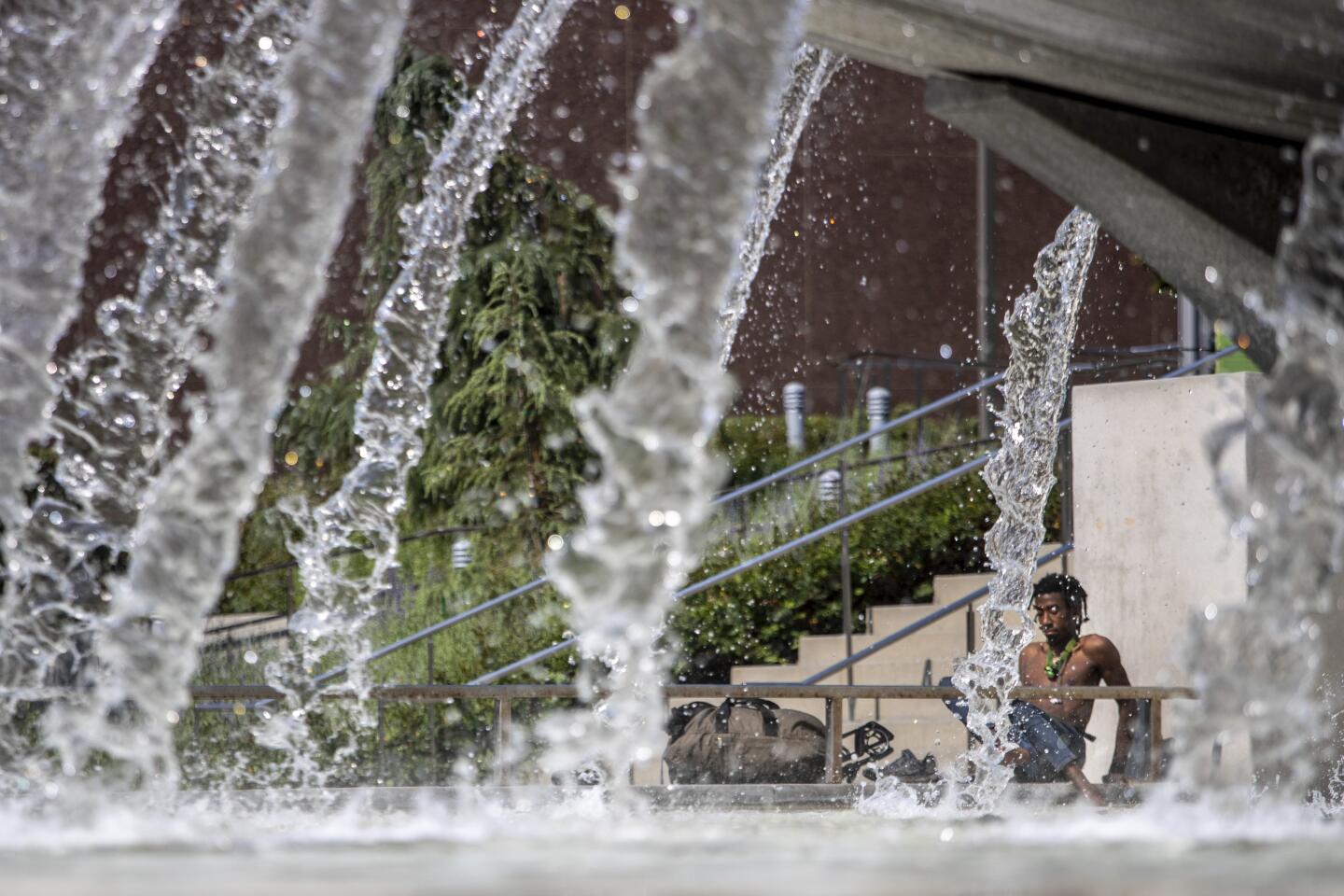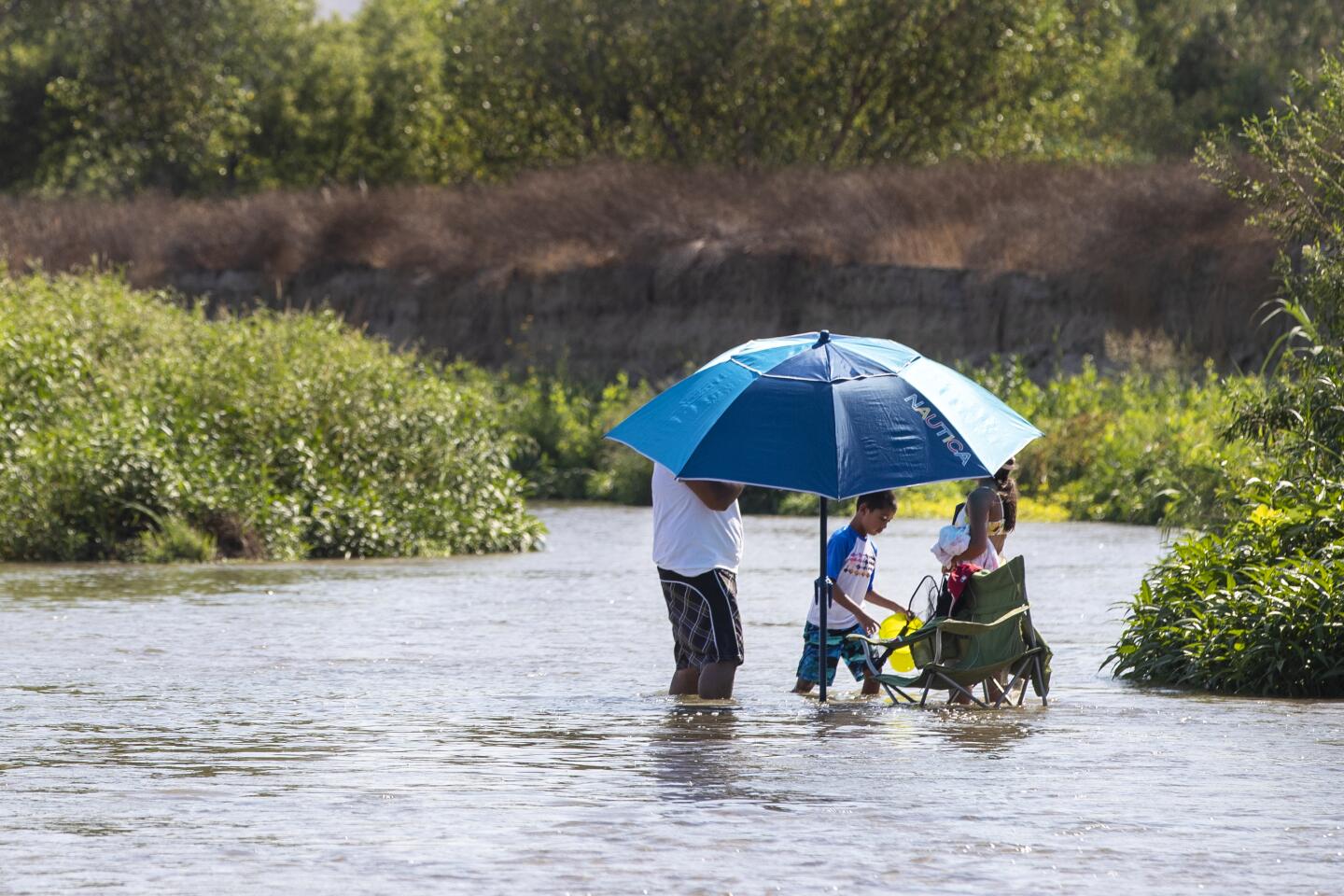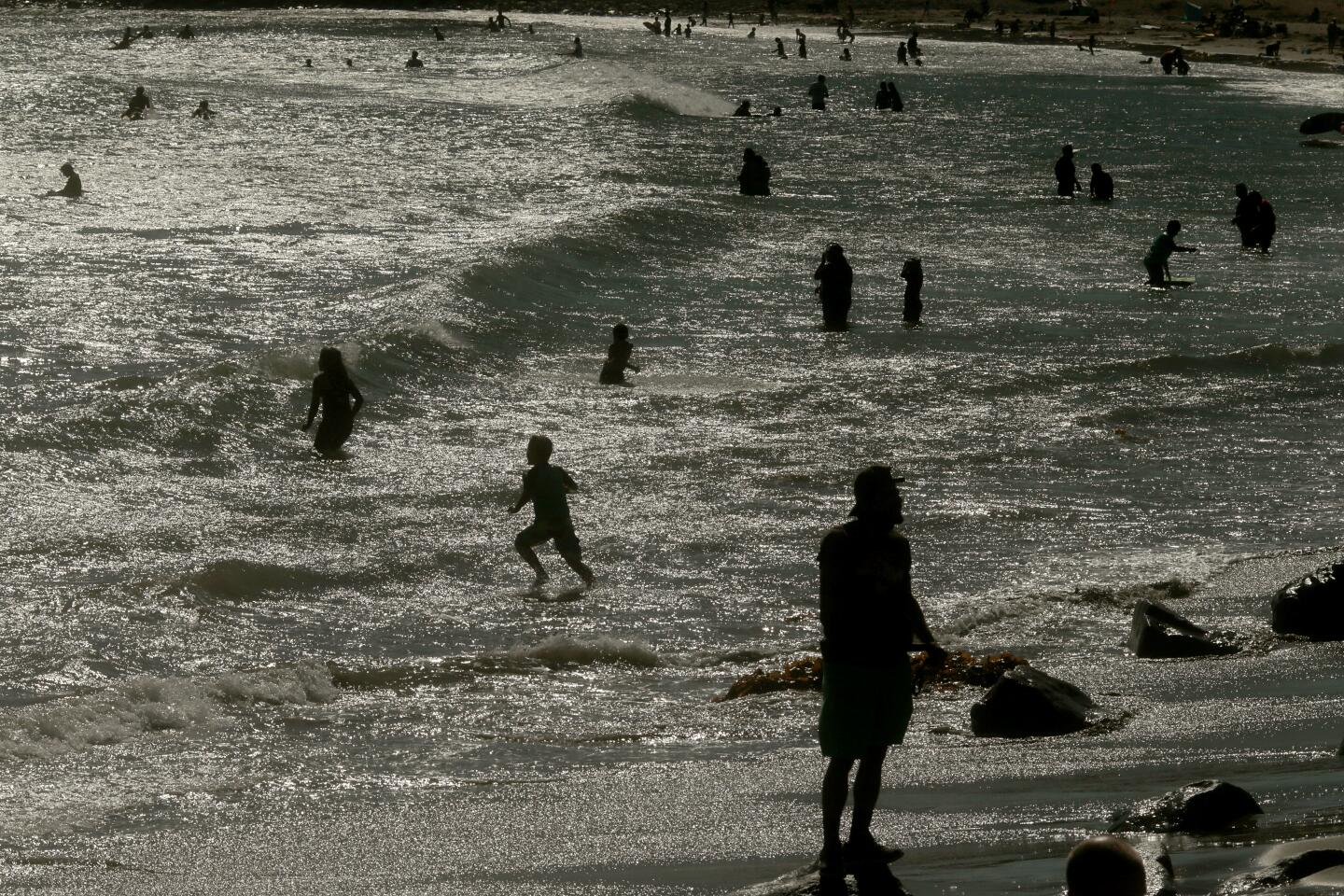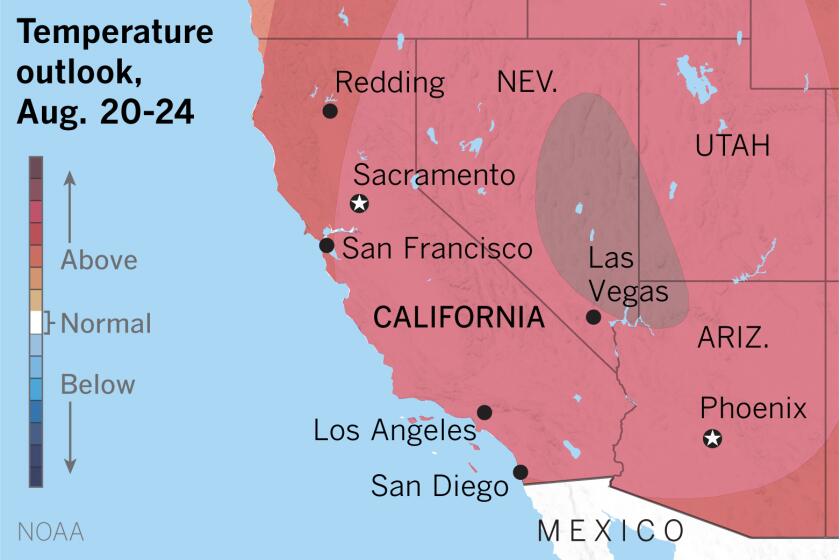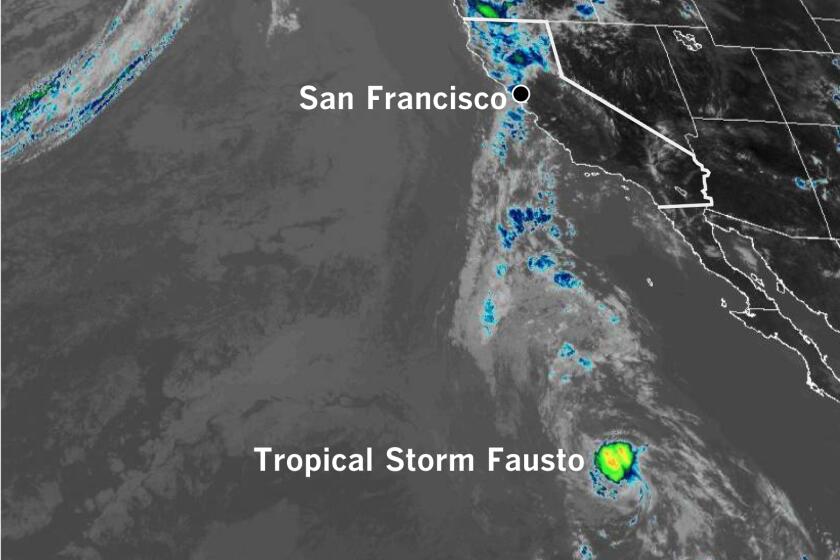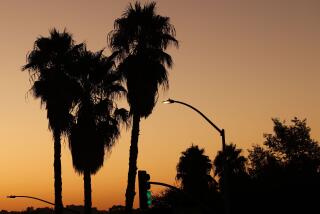Rolling blackouts warned to hit millions in California are averted, at least for Monday

- Share via
Despite warnings that power outages could hit millions in California tonight, officials declared that the measures were no longer needed following successful conservation efforts and somewhat lower temperatures.
Faced with the most severe power shortages in California in nearly two decades, officials had warned that up to 3 million people could be hit by rolling blackouts Monday. But at 7:30 p.m., the California Independent System Operator — the body that runs the electrical grid for most of the state — lifted the Stage 2 emergency it had declared earlier, signifying that the anticipated rotating outages had been averted.
For the record:
11:07 a.m. Aug. 17, 2020An earlier version of this article said that a 130-degree temperature reading in Death Valley was a possible record there. Elsewhere, the article said that the Death Valley temperature was possibly the hottest globally since 1913. If verified, the 130-degree reading would be among the top-three highest temperatures ever measured in Death Valley. Globally, there was a 1931 reading in Kebili, Tunisia, of 55 degrees Celsius, which is roughly 131 degrees Fahrenheit, according to the World Meteorological Organization.
“We are grateful to families and businesses across the state that answered the call to reduce electricity use during a crucial time on the grid,” Cal-ISO President Steve Berberich said in a statement. “This heat storm is not over, and we still expect exceedingly hot temperatures [Tuesday] and Wednesday. With continued help from California residents in conserving energy, much like today, we can reduce the risk of power outages.”
The power losses were expected to be much more widespread than those on Friday and Saturday. Gov. Gavin Newsom had called the power shortage unacceptable and pledged to free up additional energy, but had warned that the next three days will be “very challenging.”
On Monday, Cal-ISO had issued a statewide flex alert through Wednesday, calling for residents to take voluntary conservation efforts from 3 p.m. through 10 p.m. each day. It later declared a Stage 2 emergency, foreseeing rotating outages totaling more than 1,000 megawatts across the state that evening. A single megawatt powers about 750 homes, according to spokeswoman Anne Gonzales.
The state initiated blackouts Friday and Saturday nights after California fell short of its energy needs by roughly 1,000 megawatts Friday and 450 megawatts Saturday.
But on Monday, experts were estimating the state would be 4,400 megawatts short, Newsom said.
“[We’re] basically putting all our energy to create more energy, all the tools in the tool kit to meet the needs of customers in the next 72 hours,” Newsom said. “But even with all of that, we are likely to fall short and we should see some episodic issues as it relates to supplying the coverage that you deserve and you demand.”
But the crisis was averted — at least on Monday.
“We were ready and we’re glad the weather and energy supply situation improved so Cal-ISO did not have to call for rotating outages,” said PG&E spokesman Paul Moreno. “We appreciated our customers big and small who answered the call and conserved energy in our service area and across the state. We will need customers to conserve again.”
The power crisis prompted the governor to sign an emergency proclamation aimed at freeing up additional energy. The proclamation, among other things, temporarily alters regulations on the use of backup energy sources, such as stationary and portable generators, and reduces ships’ consumption of energy at ports by allowing them to use auxiliary engines rather than shore power.
Newsom pledged a full investigation into the cause of the power shortage.
“We’ve always maintained that, a golden oldie, you can’t control the weather, but you can prepare for the weather events,” he said. “And let me just make this crystal clear: We failed to predict and plan [for] these shortages, and that’s simply unacceptable.”
He framed the shortage as a consequence of the state’s transition from polluting gas plants to cleaner sources of energy and said the high demand placed on the grid due to the record heat over the last few days has exposed “gaps in terms of that reliability.”
“We cannot sacrifice reliability as we move forward in this transition,” he said. “And we’re going to be much more aggressive in focusing our efforts and our intention in making sure that is the case.”
The Stage 3 emergency declared Friday evening, which preempted rotating blackouts, was the first time since 2001 that state electric grid operators had had to implement such a drastic step.
California is in the grips of one of the worst heat waves in years. The National Weather Service said it expected more record-breaking temperatures this week Monday and Tuesday — with relief coming only after Thursday.
Temperatures in Death Valley skyrocketed to a blistering 130 degrees at 3:41 p.m. Sunday, the National Weather Service said in a tweet. It is possibly the highest mercury reading in the United States since 1913 and, if verified, “would be the hottest global temperature officially recorded since 1931,” according to the World Meteorological Organization. The 1931 reading in Kebili, Tunisia, was 55 degrees Celsius, which is roughly 131 degrees Fahrenheit. Both the Tunisia reading and Death Valley’s overall record have been disputed.
If the weather service’s recording is correct, it is among the top-three highest temperatures ever measured in Death Valley, as well as the highest temperature during the month of August.
The Death Valley temperature is still considered preliminary at this point. Along with testing the sensor involved to rule out the possibility of a malfunction or error, a climate extremes committee also will be formed to verify the reading, according to Dan Berc, warning coordination meteorologist with the National Weather Service in Las Vegas.
“They’ll certainly assess the report on the sensor’s validity, and they will also look hard at the data that came off of the sensor to see if it’s reasonable, and look at that against neighboring observations to see if it all makes sense in the grand scheme of things,” he said.
Berc said he didn’t have an exact timeline for the committee to finish its work, but said it could be a months-long process.
The World Meteorological Organization, the United Nations’ climate agency, said on Twitter that it also plans to examine the temperature reading.
Agencies may have another day’s worth of data to scrutinize, as Monday’s extreme heat is expected to continue. Forecasts show Death Valley is again expected to approach 130 degrees, and Berc said that “there’s good reason to believe that we’re going to be up in that neighborhood again today.”
“This is a very special kind of heat wave we’re dealing with here,” he said. “It’s very long-lived and it’s very, very hot — especially for this time of year. We can say the desert’s hot in the summer, and it sure is, but we’re about a month and a half past our peak for sunlight. So to see it this late is really, really incredible.”
High pressure will reach a strength that occurs only about once every 10 years, the National Weather Service said, fueling a heat wave that could rival the seven-day event in 2006 that researchers connected to hundreds of deaths.
On Monday, some areas reached record highs, including in Palmdale, Lancaster, and Paso Robles.
Multiple heat records were also set over the weekend.The National Weather Service reported a high of 112 on Saturday in Woodland Hills, breaking the record of 108 set in 1977, and a high of 92 at UCLA, breaking the record of 90 set in 2003. Downtown L.A. hit 98 degrees, tying a record set in 1994.
The excessive heat is the result of a large, strong high-pressure system centered over Arizona, which is keeping the Southwestern U.S. hot almost everywhere except within a few miles of the coast.
The heat has also worsened fire conditions in the West.
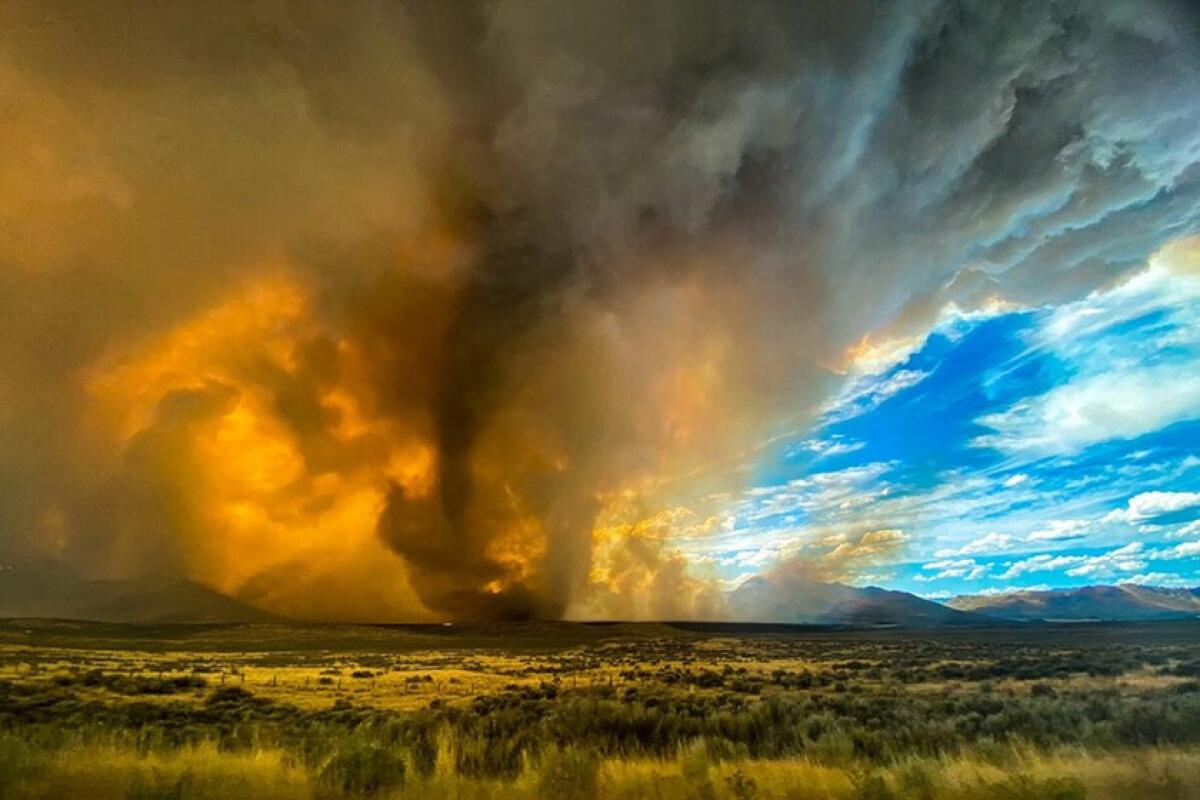
A massive wildfire in Northern California spawned rotating columns of flames Saturday, prompting forecasters to issue a rare fire-related tornado warning.
“It was a first for us,” said Shane Snyder, meteorologist with the National Weather Service in Reno, which issued the warning shortly before 3 p.m.
Multiple videos posted to social media showed twister-like formations in the path of the Loyalton fire, which started Friday evening in the Tahoe National Forest near California’s border with Nevada. The fire quickly grew to 20,000 acres and, by Monday morning, had consumed 36,295 acres and was 5% contained.
“Our resources on the ground are facing extreme fire behavior, rugged terrain and warm temperatures,” said Joe Flannery, public affairs officer for the national forest.
Rare lightning storms struck the San Francisco Bay Area and the Monterey Bay region Sunday morning, sparking multiple vegetation fires in Santa Clara, San Mateo and Santa Cruz counties.
Widespread red flag warnings are in effect across Northern California because of dry lightning strikes
A lightning strike sparked a 2,800-acre fire in Monterey County that was threatening homes and caused evacuations south of Salinas.
The Lake fire, in the Angeles National Forest above Lake Hughes, had grown to more than 19,000 acres and was 38% contained as of Monday evening. At least 12 homes and commercial buildings have been destroyed. The Ranch 2 fire north of Azusa had burned at least 3,050 acres and was 19% contained.
More to Read
Sign up for Essential California
The most important California stories and recommendations in your inbox every morning.
You may occasionally receive promotional content from the Los Angeles Times.
